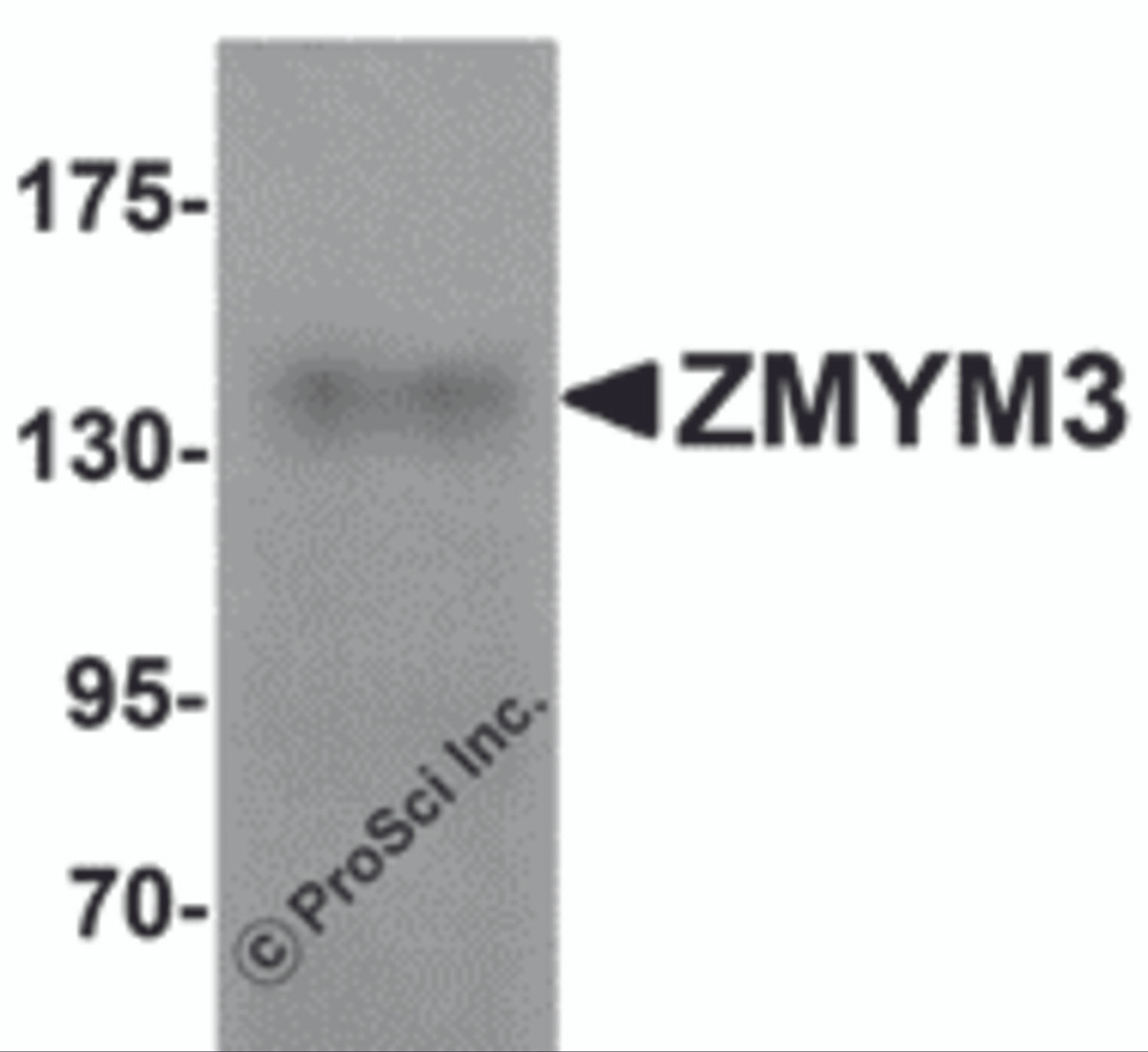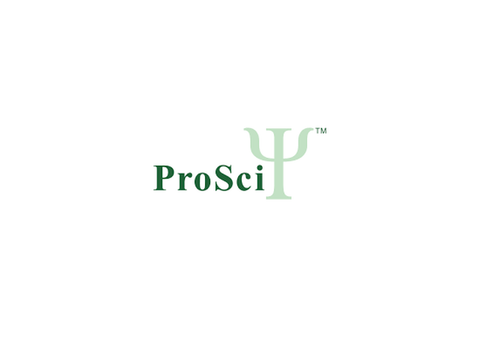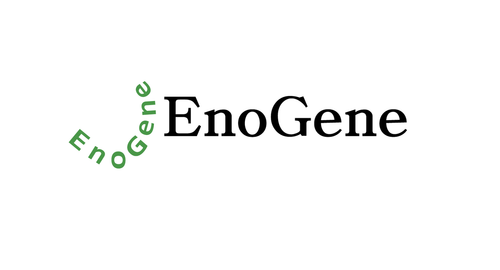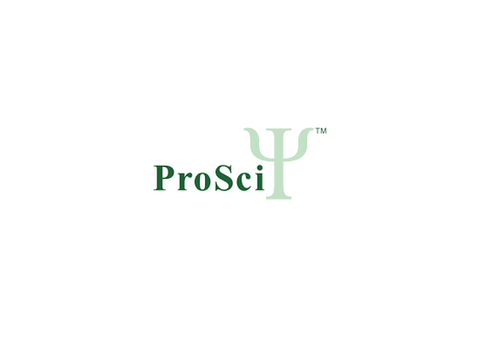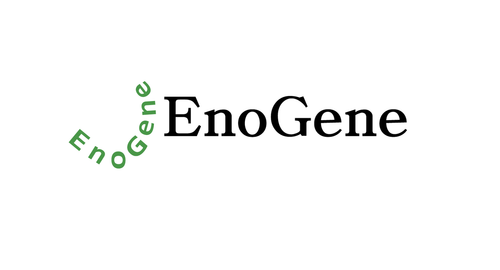Product Description
ZMYM3 Antibody | 6137 | ProSci
Host: Rabbit
Reactivity: Human, Mouse
Homology: N/A
Immunogen: ZMYM3 antibody was raised against a 18 amino acid synthetic peptide near the center of human ZMYM3.
The immunogen is located within amino acids 220 - 270 of ZMYM3.
Research Area: Homeostasis
Tested Application: E, WB, IF
Application: ZMYM3 antibody can be used for detection of ZMYM3 by Western blot at 1 μg/mL. For immunofluorescence start at 20 μg/mL.
Antibody validated: Western Blot in human samples and Immunofluorescence in human samples. All other applications and species not yet tested.
Specificiy: At least three isoforms of ZMYM3 are known to exist; this antibody will detect all three. ZMYM3 antibody is predicted to not cross-react with other ZMYM protein family members.
Positive Control 1: Cat. No. 1303 - Human Brain Tissue Lysate
Positive Control 2: Cat. No. 10-301 - Human Brain Tissue Slide
Positive Control 3: N/A
Positive Control 4: N/A
Positive Control 5: N/A
Positive Control 6: N/A
Molecular Weight: N/A
Validation: N/A
Isoform: N/A
Purification: ZMYM3 Antibody is affinity chromatography purified via peptide column.
Clonality: Polyclonal
Clone: N/A
Isotype: IgG
Conjugate: Unconjugated
Physical State: Liquid
Buffer: ZMYM3 Antibody is supplied in PBS containing 0.02% sodium azide.
Concentration: 1 mg/mL
Storage Condition: ZMYM3 antibody can be stored at 4˚C for three months and -20˚C, stable for up to one year. As with all antibodies care should be taken to avoid repeated freeze thaw cycles. Antibodies should not be exposed to prolonged high temperatures.
Alternate Name: ZMYM3 Antibody: MYM, XFIM, ZNF261, DXS6673E, ZNF198L2, KIAA0385, Zinc finger MYM-type protein 3, Zinc finger protein 261
User Note: Optimal dilutions for each application to be determined by the researcher.
BACKGROUND: ZMYM3 Antibody: Zinc-finger proteins contain DNA-binding domains characterized by the unique role of zinc and have a wide variety of functions such as transcriptional activation or repression. The protein folding and the DNA binding ability are governed by the coordination of a zinc ion. As a member of the MYM (myeloproliferative and mental retardation) gene family, ZMYM3 is highly conserved in vertebrates and most abundantly expressed in the brain. The encoded protein is a component of histone deacetylase-containing multiprotein complexes that function through modifying chromatin structure to keep genes silent. A chromosomal translocation (X;13) involving this gene is associated with X-linked mental retardation.
 Euro
Euro
 USD
USD
 British Pound
British Pound
 NULL
NULL


